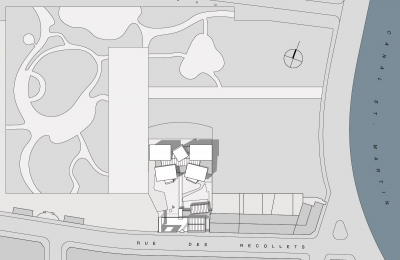Récollets day-nursery
At the heart of a densely planted island block, the nursery asserts its presence as an accumulation of pure forms. In its simple volumes, this discreet project stands in marked contrast to the refined urban constructions habitually produced by Frédéric Borel. As if, when confronted with nature,the problem was to attempt a more direct,more conceptual formal register.
The project-an apparatus of opaque blocks pressed paroxystically against each another, as if floating on glass beads-expresses paradoxical dualities of attraction and expansion,mass and weightlessness.
In the sequencing of solids massed around a compacted yet invisible center,the interiority of the ground floor moves irresistibly outwards,beyond its glass partitions. This paradox,eschews symmetry and postulates contraction and expansion, explosion and implosion,creating a strong center that is both centrifugal and centripetal. This polarity reorganizes a site in crisis,with its excessive exposure to the street and its partial transformation into a garden.
The blocks are at once heavy (by virtue of their opacity) and light (since they rest on an apparent void); though more classical in inspiration (as witness for instance Baldassare Peruzzi s masterful Palazzo Massimo alle Colonne in Rome), they seem to defy the laws of gravity. In their orange hues,they balance precariously on the transparent, aquarium-like street façade,evoking the oniric vision of bodies floating in amniotic fluid. The nursery, a world of babies, is thus presented as limbo, a locus of suspension and weightlessnesss-one absolutely transparent to the world,where the constraints and disciplines of school do not yet impinge.
Whilst quite devoid of affectation and mannerism, this modest project is inexorably animated by oxymoron-a recurrent rhetorical figure in the architect s work-reconciling opposites through a poetic ambiguity that is as profound as it is ineffable.

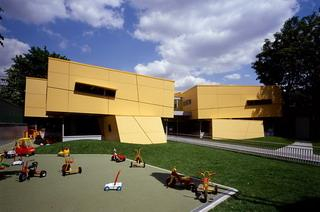
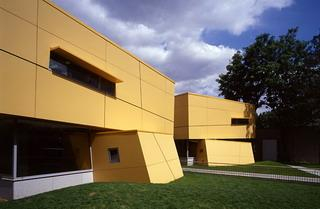
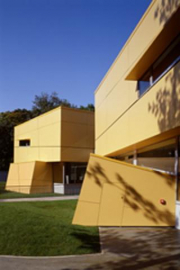
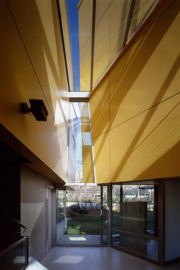
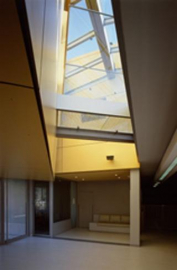
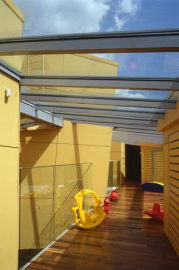

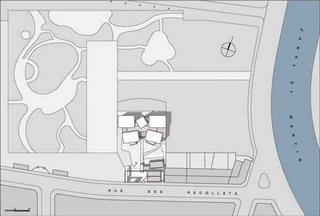
.jpg)
